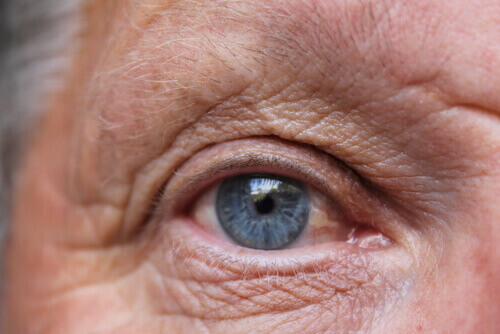Hallucinations Along with Glaucoma-Related Vision Loss
 Sometimes with vision loss, a person can see things that aren’t there. Sometimes these nonexistent objects can appear to be people, and that can be frightening. Glaucoma is one of the vision loss-causing conditions that can make a person see things that aren’t there. In fact, up to 30 percent of adults experiencing vision loss can have this experience. This number may not be accurate since many patients may not discuss these symptoms with others in fear that the issue is neurological.
Sometimes with vision loss, a person can see things that aren’t there. Sometimes these nonexistent objects can appear to be people, and that can be frightening. Glaucoma is one of the vision loss-causing conditions that can make a person see things that aren’t there. In fact, up to 30 percent of adults experiencing vision loss can have this experience. This number may not be accurate since many patients may not discuss these symptoms with others in fear that the issue is neurological.
The Truth about Vision Loss and Hallucinations
More people may talk about vision loss-related hallucinations by simply knowing more about it. This condition is called Charles Bonnet Syndrome, or CBS. He was a philosopher from Switzerland and the first to define this syndrome. He first observed it in his grandfather, who was almost blind from cataracts. He saw everything from people, buildings, and birds to paintings. Bonnet documented this observation and noted that it occurred frequently in older adults.
The hallucinations are recurring, and they can be colorful or animated. The sufferers usually have sound mental health and come to realize that what they are seeing isn’t real. None of the other senses are affected.
The Cause of CBS
CBS is sometimes referred to as phantom vision. Although the retinal cells are not working, the visual system creates its own images. There are many visual memories stored in the brain, and that is where the images are coming from. Glaucoma is a cause because of how it kills a person’s vision, resulting in the visual system generating images.
The diagnosis is usually made when there are no neurological conditions causing the hallucinations. If there are other symptoms, such as weakness, tremors, or memory loss, a neurologist can determine if another condition exists that could be causing the hallucinations.
Hallucination Factors
Lighting can influence a hallucination. If the hallucination occurs mostly in dim light, it can help to open the curtains or turn on a light. If hallucinations occur in opposite conditions, it can help to turn a light off or close the curtains.
Sometimes moving your eyes from left to right can stop a hallucination. If it doesn’t after 30 seconds, then it is most likely not going to stop at that moment. You can try again some other time in different conditions to see if it will work.
A 2014 CBS study in the United Kingdom provided more information on CBS. It showed that the hallucination can have psychological consequences. Those that experience them find them to be very distressing. Some of the subjects had hallucinations that lasted long enough to disrupt daily activities.
Preventing CBS
While CBS may not be completely preventable, it starts with addressing the issue that is causing vision loss. Glaucoma can be caught early and properly treated, slowing down its progression significantly. By slowing down progression, the onset of CBS may not happen, it could develop slowly, or it may not be as severe. If it does develop, knowledge can be very important in reducing the negativity of the outcome.


